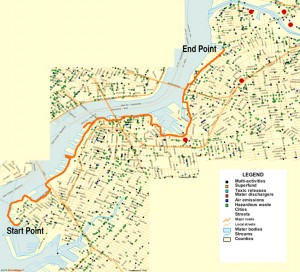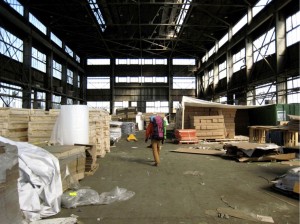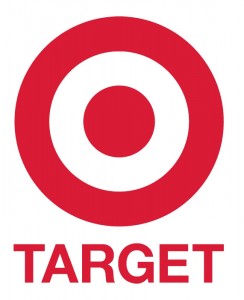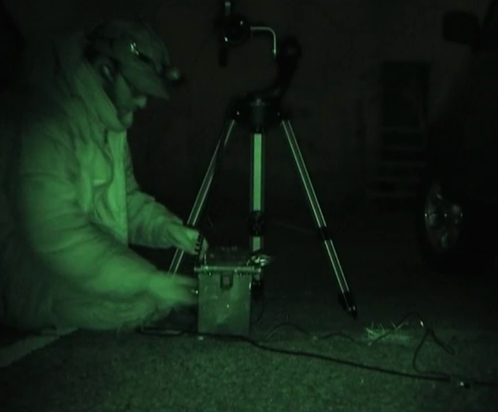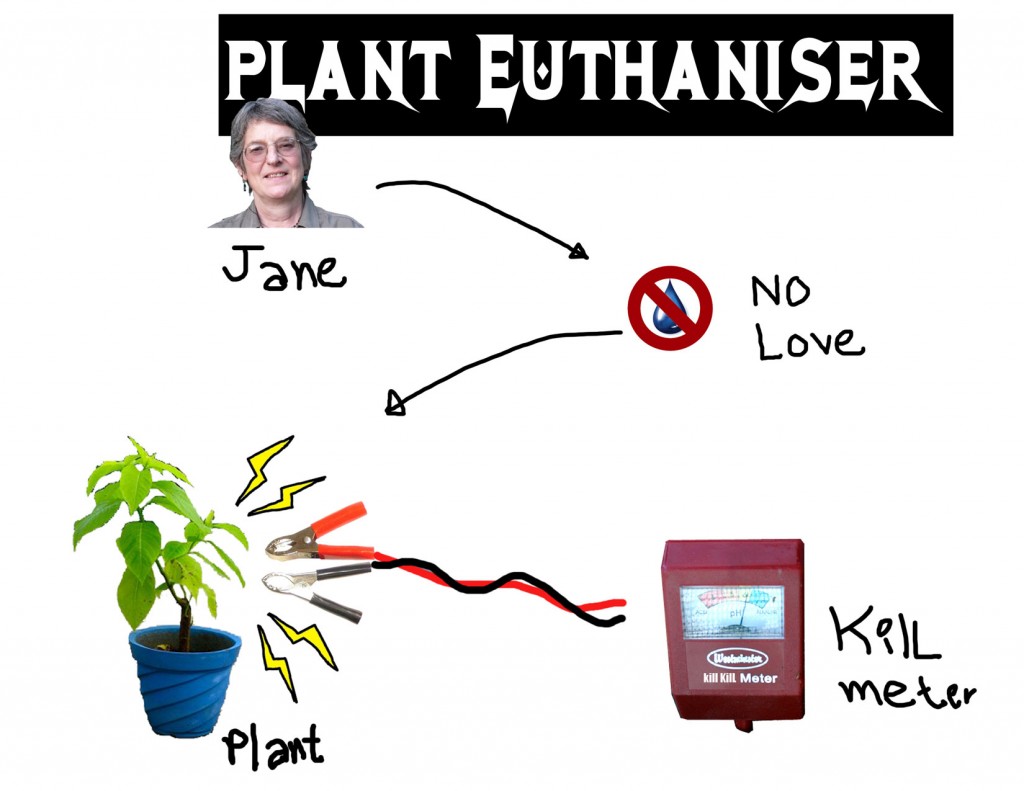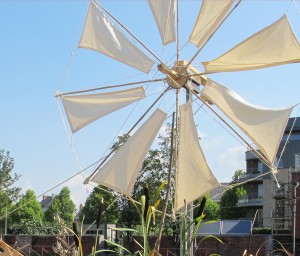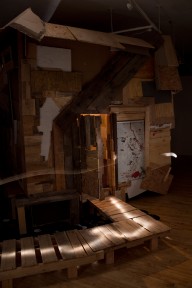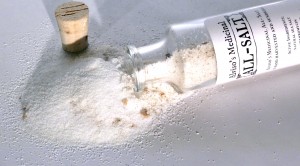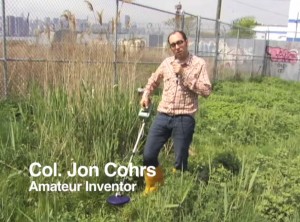Wildness Lost – A Brooklyn Past
May 24, 2008
A short film about two backpackers across Brooklyn, using only a map of toxic sites to navigate their way. They see a last glimpse of the coast before it is hidden by development.
Wildness Lost from anfw on Vimeo.
- Abandoned Warehouse
| More: Featured Work, Projects
Worlds Largest Target
March 13, 2008
I’ve created the worlds largest target. There’s a lot of competition but I think I can claim to have created the largest one in existence today. It’s 25,000ft X 20,392ft = 509 million sq ft!!, or 18.28 sq miles!! This is roughly the size of Manhattan (22 sq miles).
It requires a lot of scratch disk space to open in Photoshop. Right click + “save link as”, here to download.
| More: News
“elf’in” andy warholzzzz
December 04, 2007

commercialism at it’s finest. The Office Max Andy Warhol “elf” off.
watch it then
or catch it on break
| More: News
upcoming denver show.
August 14, 2007
Denver artist, Adam Martin has built a massive stringed chamber of old pianos, made up of about 700 strings. Together with myself we will perform a water, and sub-frequency based performance at 10pm on Friday August 31st. Due to the immobility of the piece it will be performed at at the Yard, 383 S. Humbolt (enter through the west side alley), in Denver.
| More: News
new program called the “finder dance”
here’s a new script that is as innocuous as it is fun.
you can download it here

| More: News
Icon Reforestation
August 07, 2007
This piece explores the digital realm of plant succession with in a computer system. Tens of thousands of random icon seeds are placed through a computer operating system. Once the computer has been re-forested, then all the seeds will be opened and become full grown plants. Because tens of thousands of full grown plant images are being opened at the same time, the computer will crash.
The software is now available. All you have to do is download the zip file and unzip it onto your desktop. Then double click on the icon_reforestation application and begin by selecting “plant seeds”. It will take a few minutes to plant seeds through out your computer. Then browse through your folders to see all of the seeds planted throughout your system.
![]()
When you’re ready to water the seeds, double click on the icon-reforestation application and select “water seeds”. Then, sit back and watch all the thousands of seeds grow on your screen, before they overwhelm your computer and cause it to crash.
Once this happens, reboot, and double click on the icon-reforestation application one last time, and select “remove seeds” to restore your computer.
(Right now it is only compatible with OS X, sorry…)
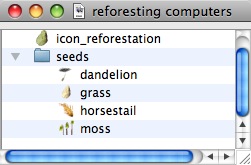
(you have backed-up of your files just in case, right?)
| More: Projects
rabbits without spleens at the knitting factory
August 05, 2007
my band, rabbits without spleens, or half of it, will perform at the knitting factory with rabbit visuals opening Eric Gaffney of Sebadoh. Should be fun.
08/08/2007 08:00 PM – Knitting Factory
| More: News
Seed Weapons
July 24, 2007
– 2006
One iteration of this project called “moss bombs” was included in the Experimenta Design 2008 Show in Amsterdam.
http://www.experimentadesign.nl/2008/en/0204.html
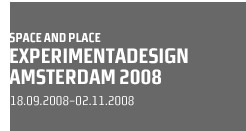
~~~~~
AK47’s and grenades are powerful images and symbols; symbols of revolt, but also symbols of violence and death. They represent the worst things that we are capable of creating: objects to destroy another human being, inflict pain and suffering, and ultimately end life. This iconic intensity can be harnessed to represent a similar warfare and intensity against the urban landscape in a clash with wilderness.
What I intend to build is a series of weapons that will both empower conceptually challenge people to take back small pockets of the cityscape. Using an iconic weapon such as an AK47, the user will send bursts of ivy seeds against run-down urban areas that will then grow over buildings, thereby mimicking the ability of nature to dominate. 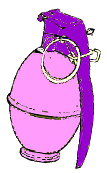
From 1945 until 1995 there were an estimated 90 – 120 million AK47’s manufactured. This far surpasses the production of any other weapon. For much of the middle east, their common place has become akin to that of a household appliance, to others they are a symbol of resistance, and to others they symbolize terrorism.
The first weapon that I intend to create will be a pink, (non-militaristic) AK47 paint-ball gun modified to shoot pellets in which the casing contains an invasive English Ivy seed, some liquid adhesive, and a small absorbent sponge. Within the several weeks following an attack, the urban space will become overgrown with an invasive species of English Ivy – a plant that has proven itself as a strong urban plant for the New York City environment. (a prototype can be seen here)
What is equally important is how the weapons are used. I intend to deploy tactics similar to the highly influential book by Mao Tse- Tung, “On Guerrila Warfare”, by attacking small urban areas to created liberated zones.
Images of Growth and Revolt:
Click here for .mov
[qt:/videos/ak47_hi-res.mov 480 360]
Initially, there was a sense of anger and hostility that I felt the city was imposing upon me. This caused a desire to turn the hostility back upon the city. However, rather than recreating the destruction I saw the city causing, I chose to use images of revolt and destruction that would serve to help recreate the fading wilderness; though the project appeared hostile due to the use of an AK47, the image of revolt implied in the weapon served only to illuminate my feeling that the city is a hostile environment. The ultimate goal of the project was to bring about something natural and peaceful: plants upon city walls.
In it’s final form, this project will fire pellets containing seeds to plant moss and ivy on walls rather then paint.
Early prototype:
| More: Projects
Urban Composting
An urban landscape is an inherently sterile environment. This environment, that many city dwellers find themselves in, is void of organic matter. Cement lines the streets, and sidewalks right up to the sides of buildings. Buildings jut upwards out of this plant-less environment, leaving no room for a natural ecosystem to support a habitat, however small, for plants and animals. This may appear to be inherent to an urban cityscape that has developed over time, but in fact this sterility is avoidable. It is advantageous for our mental and physical well being to have oxygen-generating plants, and to encourage a healthy co-existence with animals.
Being animals ourselves, we consume lots of organic matter as a food source. Food is essential to our existence, as is the oxygen generated by the plants that supports our lungs. So it seems strange that once we consume part of our food or oxygen, we make efforts to rid them from our environment. We export this organic matter in garbage bags off to distant dumps, or pollute our left-over oxygen with carbon monoxide.
In an effort to break down this inefficient chain of waste, we need to fuel our ecosystem and add use to this “waste.” We can do so directly – and it is as easy as opening a window. Our neighborhoods need our trash. Our ecosystem is dependant on our generosity to give what organic matter we may have, particularly in the face of such hostile sterile environments that make up our urban cityscapes.
The next time, you finish a banana, consider the energy saved by not throwing it in the garbage, to be shipped a few hundred miles. In fact, beyond the nearest window is a starved ecosystem that needs whatever organic matter we have to give it. Open your window, and throw that banana peel down to the street! If you have left-over pasta, don’t hesitate to donate it to the ecosystem below your household. Take a step back, think about the benefits of urban street composting, and launch those noodles out the window.
“What about the smell of rotting food?” you may ask? That rotting smell happens when food is in unnatural containers such as plastic bags, and doesn’t receive the necessary sunlight to break it down. In fact, the food may be eaten by our neighborly animals with whom we share our environment – before the organic matter has a chance to decompose. Posed another way: Would you rather smell the exhaust fumes of a diesel truck, a neighboring coal power plant, or the smell of a decomposing cucumber?
“But what about the rats?” Rats overrun areas because we don’t have an ecosystem to support a predator to keep the rat population under control. By throwing our apple cores out the window, and dumping old hardened polenta onto the street, we will encourage a population of larger animals that will feast on the rat population, as would happen in the food chain of any functional ecosystem.
“Will I get hit by food thrown from my neighbors?” This is a legitimate concern. As a pedestrian, it is important to look both ways before crossing a street, so in the same way, you should be vigilant to avoid stepping on garbage as you walk, and you should pay attention to objects that may be falling from above. But, the responsibility is a two-way street. As a car driver, one must always watch out for pedestrians crossing, and so one must also look before one throws anything out the window. This is a good habit to cultivate not only to avoid pedestrians, but also to avoid throwing organic matter in the same spot. It is best to spread the matter across a larger area to increase sun exposure, and to prevent buildup in a spot that may become a potential road hazard.
The benefits of urban street composting are numerous. Most notably you are participating in the rejuvenation of your immediate ecosystem. Consequently, plants will grow and animals will thrive off their new food source. In turn, new plants will generate oxygen and the animals will provide a new food source. In addition, we will be cutting the amount of waste we export to landfills in half. These are a just a few a benefits – one cannot possibly hypothesize the potential when introduced on a large scale. Urban street composting will revolutionize our sterile cityscape into a dynamic ecosystem that can sustain our mental and physical well-being for years to come. The next time your sushi goes bad, take a second to consider the options available to you right outside your window. You will be doing yourself and your ecosystem a favor.
| More: Projects
Worlds Largest Target
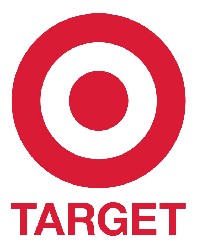 I’ve created the worlds largest target. There’s a lot of competition to create the biggest target in th US, but I think I can claim to have created the largest one in existence today. It’s 25,000ft X 20,392ft = 509 million sq ft!!, or 18.28 sq miles!! This is roughly the size of Manhattan (22 sq miles). Thats a target that’s hard to miss.
I’ve created the worlds largest target. There’s a lot of competition to create the biggest target in th US, but I think I can claim to have created the largest one in existence today. It’s 25,000ft X 20,392ft = 509 million sq ft!!, or 18.28 sq miles!! This is roughly the size of Manhattan (22 sq miles). Thats a target that’s hard to miss.
If you’d like to create your own, all you have to do is download this file. It’s 82mb compressed but if you open it up, you will have a 509 million square foot target, that you can print out.
Download Worlds Largest Target
( FYI : it requires a 206gb of cache space on your computer. remember we’re going big)
| More: Projects
Plant Euthanizer
March 24, 2007
-the plant euthanizer, is a piece that puts humans in the uncomfortable position where passive inaction will lead to the electrocution of a plant.
| More: Projects
Mission Rescue DVD Extra
Mission Rescue – Final Frontier – xtra version from anfw on Vimeo.
In 2002, I was in an accident while kayaking in Alaska. National Geographic happened to be there and filmed part of my rescue and created a documentary about it. 5 Years later i got some of my friends where there during the accident to do a voice over narration, complete with beer.
Here’s the original Documentary.
